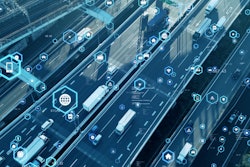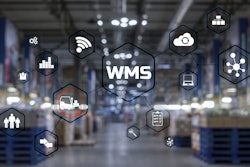
Traditionally, internal combustion engines (ICE) have been the go-to-choice for port operators, if not the only choice. But recent advances in equipment powered by hydrogen fuel cells (HFCs) are changing the conversation for the future of ports. Before you can even consider going electric, there are important questions to understand – how could HFC-powered equipment benefit your port? Does it have the brute strength necessary to take on the heavy-duty functions that typify port settings, and can it maintain effectiveness and efficiency while doing so? A closer look at these considerations offers a deeper understanding of where port equipment electrification is headed.
1. Is hydrogen really a fit for port equipment? How do performance and reliability stack up?
In addition to powering forklifts, some companies are testing container handlers powered by HFCs. Such pilots are part of a broader approach to use hydrogen fuel cells to enable the electrification of vehicles and equipment in more demanding applications that could not be handled by batteries alone. HFCs offer predictable power delivery until full depletion like their ICE counterparts. Further, HFC-powered equipment uses electric drivetrains that have fewer components and less complexity than ICE, offering similar or better reliability with reduced maintenance.
2. Does HFC-powered equipment produce harmful emissions?
Equipment powered by HFCs only emit water and heat – no greenhouse gas (GHG) emissions. HFCs work in tandem with an onboard lithium-ion battery, which also produces zero carbon emissions. The fuel cell can power equipment directly or charge the lithium-ion battery, which can also power equipment and capture regenerative energy from braking and load lowering. In practice, the goal is to draw power from the path of least resistance, prioritize efficiency, avoid drivetrain loss and extend the life of the power source.
These attributes can make them an especially attractive option as governments continue to tighten air-quality regulations, exemplified by California’s commitment to deriving 50% of the state’s electricity from renewable resources by 2030. A typical diesel top-loader operating 3,000 hours per year emits around 137 tons (300,000 lbs) of carbon dioxide every year, along with almost a half a ton of criteria pollution over the course of the year. Adopting renewably produced hydrogen as a zero-emission fuel source is important for the entire industry as operations strive to meet government regulations as well as their own sustainability targets.
3. What kind of refueling demands would it place on my operation and my operators?
Unlike lithium-ion batteries, HFCs do not need to be recharged. Instead, operators refuel a tank of hydrogen, more akin to the process and time spent refueling ICE-powered equipment than lengthy battery charging. For large equipment with big tanks, it takes roughly 15 minutes to fill an empty tank – enough for 8 to 10 hours of continuous run time. By comparison, it can take anywhere from one and a half to five hours to fully recharge a battery for a large container handler, depending on the charging setup and a fully charged battery typically only lasts four to eight hours. This means that hydrogen-powered units do not need to refuel as frequently as counterparts that are fully battery electric need to recharge, nor do they spend nearly as much time parked at refueling stations – fuel cells can help drive emissions reductions, while also protecting uptime.
4. What kind of space will I need for refueling?
In general, powering equipment with hydrogen requires less infrastructure and space than relying solely on battery power. Battery charging stations can be bulky and an optimal charging strategy requires strategically locating them throughout the port to allow for easy charging on breaks. But even with the right charging infrastructure, operators can still forget to charge equipment when they take a break. Meanwhile, hydrogen fuel cells are less dependent on operator charging behavior and your electrical grid than other electric power sources. Plus, you can place hydrogen dispensers in a variety of locations.
Electrified high-capacity forklifts and container handling equipment have the potential to transform the port industry. As your terminal navigates its own path to reducing emissions, consult with an expert to understand whether hydrogen is a fit for your goals, infrastructure and operational demands.



















